Per-Mile EV Leasing, Bargain Ride Hailing at Toronto’s Final Collision
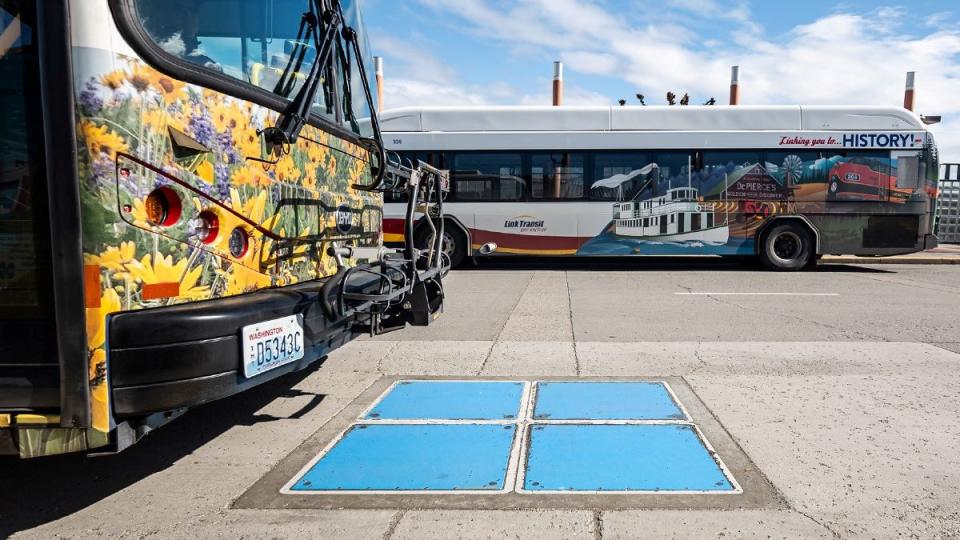
"Hearst Magazines and Yahoo may earn commission or revenue on some items through these links."
Among highlights, Induct EV (formerly Momentum Dynamics) has customers for inductive wireless EV charging. Volvo in Sweden is pilot-testing Induct EV tech for 25 Volvo XC 40 EVs in use as taxis.
Startup Spring Free EV is using advanced telematics to offer per-mile leasing that pays off for fleets of high-mileage vehicles.
Autonomous trucking firm Plus has an agreement with Hyundai to develop Level 4 self-driving systems for its Class 8 XCIENT fuel-cell trucks that are being rolled out in a fleet for container transport at the Port of Oakland.
The news is that the 2024 edition of the Collision technology conference in Toronto is the last: The event is moving to Vancouver and will be branded as the Web Summit (as is the presenter’s bigger annual conference in Lisbon) for May 2025.
Toronto will be losing something important, a venue that brings together tech leaders from all over North America, Europe, and Asia.
While not an auto show by any means, Collision—like the Consumer Electronics Show in Las Vegas—has had plenty of car content as the industry relies more and more on computing power. The average car today has more than 100 million lines of software code. Here’s some of what was happening on the floor.
Inductive from the Ground Up
Inductive wireless charging has long been a dream of the EV industry. Multiple startups have come and gone in the space without gaining traction or automaker sign-on.
The idea is to charge via a pad in the ground to a precisely aligned pad on the bottom of the vehicle, six inches apart, as the energy transfers through magnetic waves.
The issues are correctly aligning the pads each time and the electrical losses—typically 10%—from transmission. Pennsylvania-based Induct EV hasn’t solved the loss issue (maybe it’s not solvable).
But John Rizzo, who handles manufacturing, technology, strategy, and marketing for the company, said that widely used DC fast charging also has losses from transmission of energy.
Induct EV (formerly Momentum Dynamics) has raised $140 million and actually has customers, though mostly in the commercial space. It’s targeting the freight and transit markets.
“We started in 2017 with Link Transit in Wenatchee, Washington,” Rizzo said. “Now we have 90 transit districts across Washington State.” There are also projects in Port Elizabeth, New Jersey; Martha’s Vineyard; and Indianapolis.
Autonomous mining vehicles use the technology, too. With Volvo in Gothenburg, Sweden, Induct EV is taking part in a three-year pilot program with 25 Volvo XC 40 EVs in use as taxis. The taxis drive 62,000 miles annually, are in use 12 hours a day, and recharge wirelessly at 40 kilowatts.
Rizzo said the great advantage of charging pads is that commercial vehicles don’t need to return to home base—they can charge on their fixed routes during the day when rates are low. This, of course, requires investments to install charging pads somewhere along the route.
Don’t expect to charge your Tesla wirelessly anytime soon, though wireless phone charging is becoming standard. “Economics drives our use case for commercial operators, but the technology is still too expensive for passenger cars,” Rizzo said.
Lease It—with No Down Payment
Startup Spring Free EV is making use of advanced telematics to increase EV adoption through innovative leasing options for vehicles that are on the road a lot. For commercial users such as small and midsize rental fleets, Spring Free is offering per-mile leasing that pays off for high-mileage vehicles.
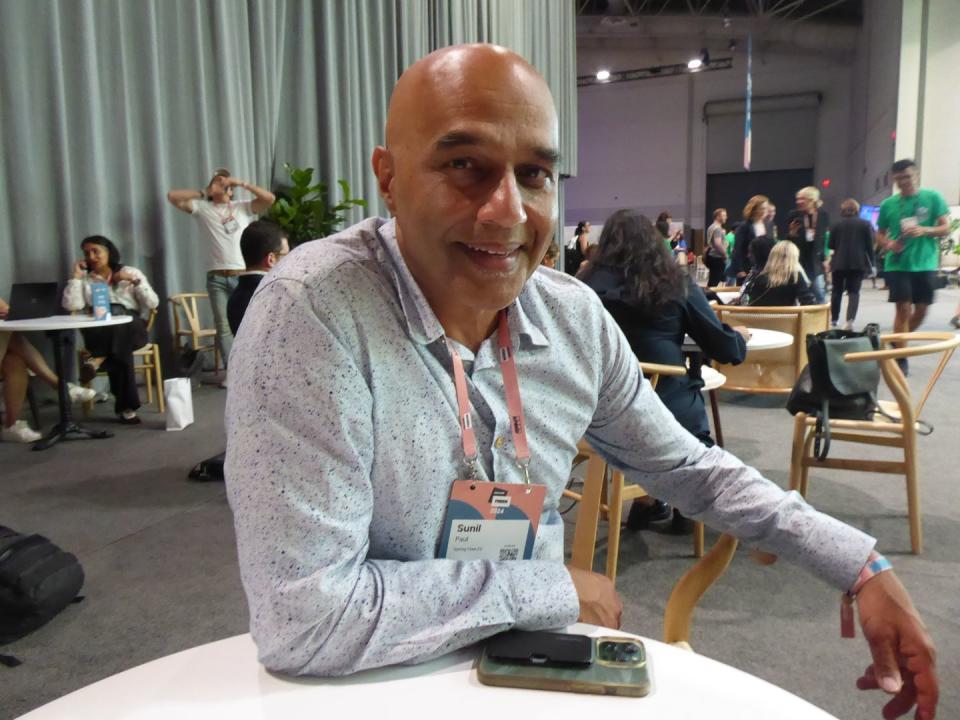
“Leasing is stuck in the consumer world,” said serial entrepreneur Sunil Paul, Spring Free’s CEO and co-founder.
“We’re working with companies that aren’t big enough to get into large vehicle financing and don’t have the tax liability to use existing credits. The idea is scaling your business fleet while reducing maintenance costs by up to 60%.”
The company offers leases—with no down payment—on EVs that could go into fleets from Tesla, Rivian, Lucid, General Motors, and others. A lease on a Chevrolet Bolt would start at $650 a month, with 2,000 miles included.
Cars and Trucks—to Order
Los Angeles-based Machina Labs invites companies to use its advanced seven-axis Robotic Craftsman to shape flat steel (or carbon fiber, or aluminum) and turn highly individualized designs into physical products autonomously, fabricating a part much faster than previously possible.
The robots can change sensors and tools quickly to adapt to forming, scanning, or trimming, said co-founder and CEO Edward Mehr. “It will make manufacturing as fast as coming up with new designs,” he said. “The robots can combine human-level dexterity with precision controls.”
There seems to be some parallels to the 3D printing capability, as Czinger has adapted AI and laser-guided robotics for auto manufacturing.
Bargain Your Ride
inDrive is an international ride-hailing service operating in 46 companies that allows its customers to bargain on the price for rides offered by drivers.
The company was founded in Russia by Arsen Tomsky but is now based in California. It also established a US beachhead in Miami last year after an earlier attempt in New York.
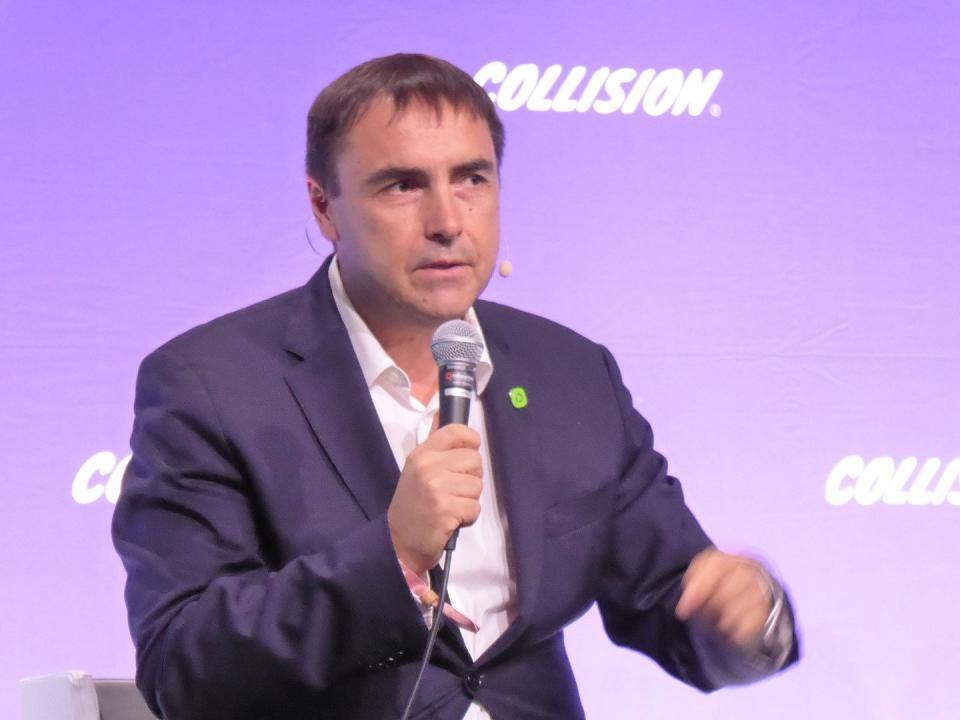
It takes a 10% commission, and the passenger can choose between five bids, according to President Mark Loughran. “Last year we grew by 50%,” he said. Right now, moving people is 90% of the company’s business, but it is expanding rapidly into freight and parcel service.
inDrive has a philanthropic mission, too. In Mexico, Loughran said, 25% of its drivers can’t work because their vehicles are out of service, and the company created a micro-loan program to address that issue. “We’ve given out thousands of loans; they pay us back as they drive,” he said.
Flying Cars Are Still Coming
California’s Archer Aviation said its Midnight electric vertical takeoff and landing aircraft will be flying soon.
“You’ll be seeing a lot of news, a lot of testing and flying, in the next nine to 12 months,” said Billy Nolen, a pilot and former acting administrator for the Federal Aviation Administration and now chief safety officer at Midnight.
The company is targeting 20- to 50-mile routes that would take an hour in a car.
Moving Hyundai’s Hydrogen Trucks
Autonomous trucking firm Plus has signed an agreement with Hyundai to develop Level 4 self-driving systems for its Class 8 XCIENT fuel-cell trucks that, among other applications, are being rolled out in a fleet for moving containers at the Port of Oakland.
“Our vision is fully driverless operation from one customer location to another on defined routes,” Shawn Kerrigan, chief operating officer and co-founder of Plus, said at the Collision conference.
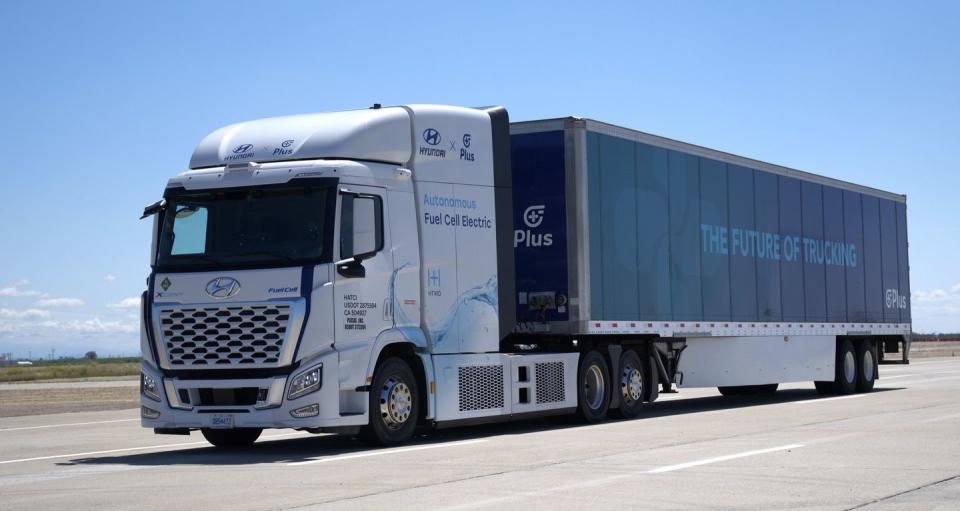
Look Underground to Store Energy
Intermittent wind and solar power (30% of global energy generation in 2023) produces electric power that either has to be used immediately or stored—via batteries or pumped water.
Curtis VanWalleghem, CEO and co-founder of Hydrostor, said his Canadian company’s more-efficient solution is using the energy contained in compressed air.
Wind and solar energy deliver power to compress the air, which is then stored underground (for up to 24 days, with the Earth acting as a giant battery) for use in large power plants that have a 50-year life span.
“Non-emitting solutions can soak up the [wind and solar] surplus and then return it to the grid,” VanWalleghem said. “There’s no need to build more natural-gas plants for baseload power.”
The company has projects in Australia, California (that one is 500 megawatts), and Canada, with plans for 100 projects over the next 15 years. Goldman Sachs Asset Management is an investor.
Street Charging the ‘Green Cabinets’
Etc., the incubation arm of telecommunications giant BT Group in the United Kingdom, has a project to transform what it calls “green cabinets,” used to store broadband and phone cabling, into EV charging stations.
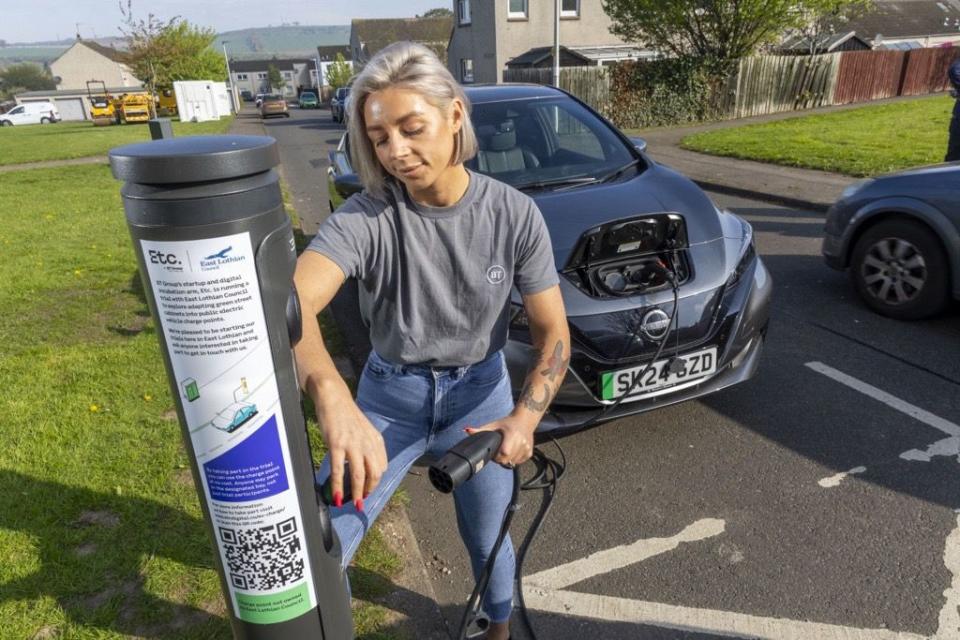
The first of these was in Scotland last May, but the plan is to scale up to 600 sites across the UK, said Tom Guy, managing director of Etc. “We’re making use of BT’s assets to quickly create a car-charging network,” he said. A similar idea to convert New York City phone booths to EV charging was floated in 2013.
Retrofit Homes for Zero Emissions
Buildings generate 20- to 30% of global warming gas, but 80% of them have no associated digital data. Metaroom does digital 3D scanning of buildings with smart phones in minutes, enabling low-carbon retrofits, said CEO Martin Huber.
Canada-based Climative wants to retrofit existing homes for net-zero emissions, which CEO Winston Morton describes as a trillion-dollar market. Climative uses artificial intelligence (a constant at the conference) to create low-carbon retrofit plans.
“Only 10% of building owners have gotten advice on retrofitting, and only 1% have actually retrofitted. But we need at least 5% to meet our climate goals,” Morton said. “Every home can see a positive return on investment.”
Going Accident-Free, Intelligently
Material-handling vehicles like forklifts are involved in 30% of workplace accidents. Seeteria uses advanced technology to reduce those incidents, said CEO Sarit Tamir.
“Using AI, machine vision, and predictive analytics, we transform your existing security-camera infrastructure into a sophisticated safety network,” the company said.
Is there an automotive technology you expected to be more widely accepted in mainstream applications by now? Please comment below.

 Yahoo Autos
Yahoo Autos 